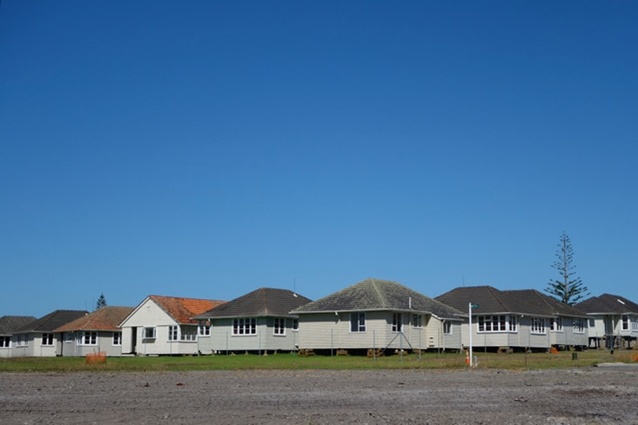Politics in the built environment
“A bit ugly” – Sam Aislabie, an architecture student, envisages the kind of city we want Auckland to become 50 years from now.
When I think of the city in which I want to live 20 years from now, I hope to live in a dense, vibrant city with the amenity and safety of ‘24-hour’ streets with excellent public transport, parks and recreation spaces, and with a small carbon footprint. The Auckland Unitary Plan will be the first step towards the intensification that will help to achieve this goal.
It has been disappointing to see, however, the complete apathy the National Government has shown over whether Auckland goes up or out – so long as the housing market is alleviated. It’s no surprise that a large number of the recent Special Housing Zones have been designated to greenfield developments, some of which are far from existing infrastructure and amenity, when the Government has made it quite clear that. if the Council doesn’t fall in line, it will issue building consents itself. While housing in these areas may be more affordable up front, a recent study suggested that, when the cost of transport was accounted for also, it was the inner-west and southern suburbs that came out as most affordable.
On the other hand, Labour’s policy, KiwiBuild, promises to build 10,000 homes annually for the next 10 years – the largest public building programme in 50 years. While larger homes are likely to be stand-alone and cost upwards of $500K, the challenge of entry-level $300K homes will, from what I understand, be achievable only with apartments and terraced housing, which are far more likely to be built in existing urban areas. Of course, there is much speculation about whether Labour can deliver on this but, if it is to keep its promise of affordability, density will be the only way.
Build quality, however, is a whole different issue. Labour’s housing spokesperson, Phil Twyford, has gone as far as saying, “Every KiwiBuild house will be architecturally designed” (I’m sure we share a different idea of what this constitutes) citing the recent ‘starter home’ as an example. This sits in stark opposition to Bill English’s recent comment that, to be affordable, housing will “have to get a bit ugly”. When the Government has resigned itself to the position that affordability means a massive compromise on design, we are setting a time bomb for future slums.
If any policy is to be directed towards housing affordability, it must be accompanied by strict quality controls. I find the use of minimum dwelling size to be a frustrating indication of quality; small spaces can be fantastic when they are designed well. The draft guidelines that have been released recently for apartments in Melbourne are a step in the right direction, prescribing ample access to natural light and ventilation for all rooms, as well as balconies at least 2.0m deep for flats above ground level and a minimum stud of 2.7m. Despite initially driving up house prices, ensuring ‘livable’ spaces will help buildings maintain their values once an adequate supply of housing is reached.
This election, the prevalence of advocacy groups like Climate Voter and Generation Zero indicates that climate change is firmly on the agenda, particularly amongst the ‘youth vote’. Policies like the Green’s solar panel subsidies are great initiatives; however, as far as I can see, building densely and ensuring high-quality design is the only way to create a sustainable future. If the expense incurred in this means that both my feet stay firmly off the property ladder for a bit longer, then, so be it. Of course, I am in a privileged position to be able to say that; buying my own home is still a very distant goal.
More immediate issues affecting me are the cuts made a couple of years back to the postgraduate student allowance. A master’s degree in architecture now means taking on even more debt. As part of their campaign policy, the Greens have promised to reinstate this allowance.
Employment opportunity is the other blip on my immediate radar. For the first time in my three years at architecture school, a poster went up on the wall advertising jobs at a prominent architecture firm. But I only have to talk to the most recent round of graduates to know that their prospects were a little more bleak. I must admit, despite my aversion to the current Government, I do wonder whether my job prospects would be the same if Labour had been in power during the past two terms.
In our urgency to address the current housing ‘crisis’, we need to be very careful that we are not creating the conditions for future environmental and societal crises. Poor-quality housing on a national scale is what creates slums and leaky-home-scale disasters. We need to think about what kind of city we want Auckland (and other cities around New Zealand) to be in 50 years from now, not just the immediate challenges we face.










